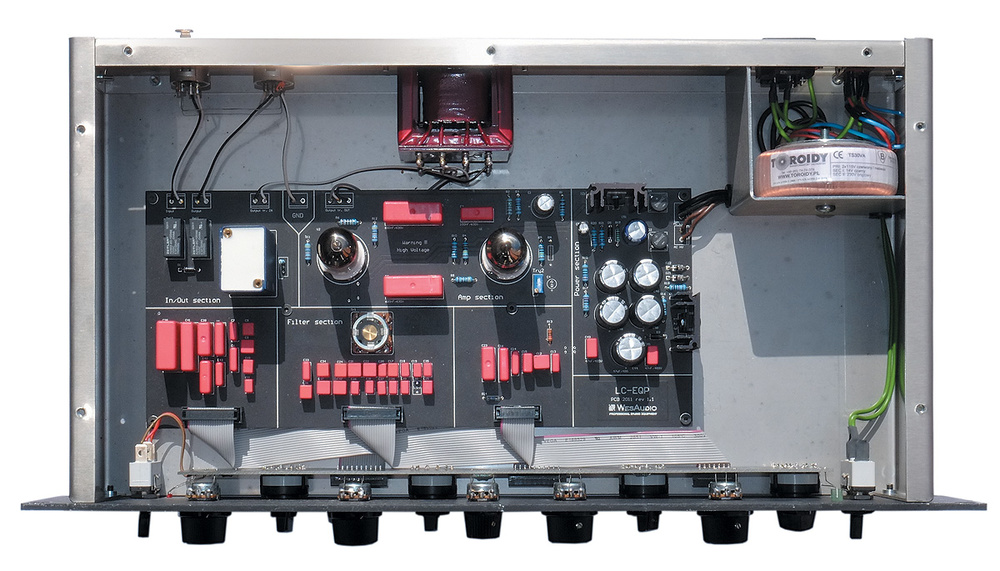Edit:
Not thinking straight re no decoder for M/S below!
Neither of the two pics posted appear to have controller chip functions at the front panel - the first being a tube unit has no IC’s that could do controller functions.
The one you are wanting to use, looking at the front panel control it looks like it may be doing the m/s encode switching via relay logic which is easily done using phase reversal and summing with buffer IC’S - however to hijack the signal you would need to feed the output of each buffer stage to an IC capable of driving an insert send and then a receiver to bring the signal back in from the insert return. You would also need to cut the connection link at the switch insertion point so you don’t end up with both insert and thru signal mixed. A schematic is essential to do a design that would make this easy.
Delete: (However - the BIG but here - this unit will only have the encoder - no decoder. As this EQ does separate EQ on mid and side or left and right - (looking from above it is a dual EQ, so I would assume so, otherwise there would be little point in having an m/s switch) the switch encodes pre EQ and has no need for a decoder!)
As an external device a simple mixer with phase reverse switches on each channel and 4 assignable subgroup outs you can make your own M/S encoder/decoder.
Encoding M/S Signal:
3 channels needed with
Ch1 Left signal coming in
Ch2 Right signal coming in
Ch3 Right signal coming in - you can use a parallel link input cable (or use a Group send from Ch2 into Ch3 input but the two channels need to be at identical levels).
Ch1 assigned to Group 1 and Group 3
Ch2 assigned to Group 1
Ch3 assigned to Group 3 phase invert sw engaged
Do not assign these 3 to Main mix out.
Group 1 out (encode/send) = Mid = Ch1+Ch2 sum Left+Right
Group 3 out (encode/send) = Side = Ch1+Ch3 diff Left-Right (Phase inverted Right Channel means we get difference between original Left and Right channels).
I have used Groups 1 & 3 as a lot of smaller mixers have groups allocated to buttons in pairs using pan left for odd, pan right for even so in this case pan Ch1 x Ch3 left. If using a mixer with a separate switch for each individual group the pan rule still usually applies.
The two Group output faders should be set at -6dB (or the three channel faders at -3dB) as the summing increases the signal levels.
| L-R to M-S | M-S to L-R |
| M = L+R | L output = M+S = (L+R)+(L-R) = 2L |
| S = L-R | R output = M-S = (L+R)-(L-R) = 2R |
Decoding M/S signal:
Ch4 Mid (return/decode) signal coming in. Panned to centre, assigned to Main
Ch5 Side (return/decode) signal panned left, assigned to main
Ch6 Side (return/decode) signal panned right, phase invert sw engaged, assigned to Main. Once again you will need a parallel split cable for the return to link 5 and 6 inputs.
All faders set to -3dB.
Left Channel = sum Mid+Side
Right Channel = difference Mid-Side
The software M/S encoders and decoders do exactly the same thing.
You can also buy purpose built encoder/decoders.





